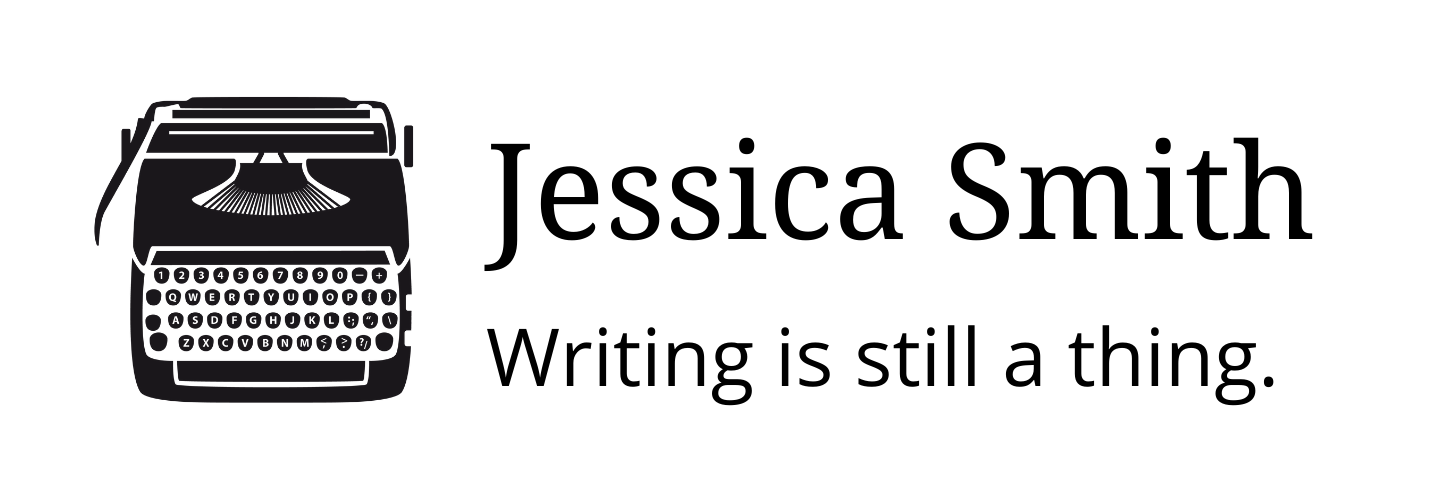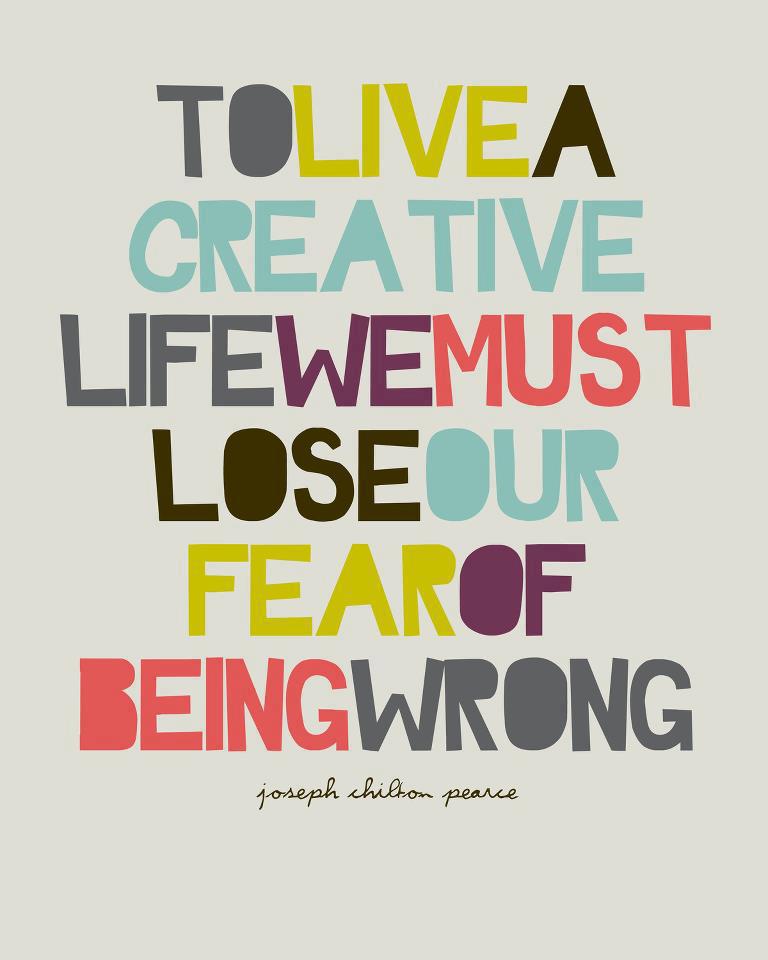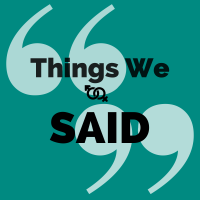I’m not a big fan of saccharine inspirational quotes.
Pithy sayings on Dove wrappers or framed pictures in reception areas (think “Team Work” with a picture of early morning rowers) are not my jam. I’d rather write a sketch about it than see it in a greeting card.
Simplicity and truth are inspirational to me, so when I read Tina Fey’s “Bossypants,” and she wrote, “There are no mistakes, only opportunities,” I began to understand something that had been on the edge of my consciousness for years: perfectionism is a handicap, and the only way to real growth in life and creativity is to be comfortable with weakness and failure.
The quote above is an emotive expression of that same thought. “Cool, I’ll throw it up on my Pinterest board, but what does that mean for my life/ art/ cooking/ Etsy shop?” Truth is, I’m still working on that, but let me introduce you to a couple things (in no particular order) I’ve learned at Second City that are becoming my creative bread and butter.
The Rule of 10
The Rule of 10 means that 9/10 of sketches you write is going to be crap or at best mediocre. Just own it from the start. Oh, you’re a star all right, but even stars have to put in the hard work.
Think of your favorite movie or TV show. Now think of a scene that made you laugh or cry. Do you think that memorable scene was done in one take? No, it wasn’t. It does happen that the first take is the winner, but those are in the minority.
Why would it be any different with writing? Oh those words aren’t just what you want to express? Of course they’re not! That’s what editing’s for. Even after tons of editing, that paragraph or blog post or sketch or chapter or painting or loaf of gluten free pumpkin bread may not be your masterpiece. Cool. Accept the process and move on. Genius will strike.
Lists of 10
Lists of 10 are lists of 10 aspects of a thing you’re writing about/ creating. You usually will do several of these around a particular sketch. For example, if I’m writing a sketch about a rabbit that’s opening hair salon, but I’m not sure what’s going to happen besides an argument about whether to call it “Hare Cutz,” I’ll write a list of 10 (or five or seven) things, like things in a hair salon, services offered at a hair salon, and things people say in hair salons. I did one:
- hair dryer
- brush
- comb
- pick
- shampoo
- conditioner
- clippers
- nail polish
- gift cards
- receptionist
You can even do sub-lists of ten. Here’s sub list of shampoos:
- Shampoo for fine hair
- Shampoo for oily hair
- Shampoo for curly hair
- Shampoo for color treated hair
- Shampoo for damaged hair
- Botanical shampoo mask
- Shampoo/ Conditioner in one
- Shampoo for dry hair
- Shampoo for kids–tear free!
- Eyebrow shampoo ( I know this is dumb. No self editing.)
Don’t be afraid to list the hell out of your project, but don’t get stuck on lists. It’s a starting point for ideas for character, plot, environment, etc. Bottom line–just list it. NO OVERTHINKING ALLOWED. List lame things. Let yourself fail.
Freewriting/ The Eff-It Principle
Freewriting is just that. Write what you’re thinking of exactly now and continue doing that for a set amount of time — five minutes, 20 minutes, whatever. No stopping. Just write what you think. If one line of thought ends, begin with the next thing you see or think of. If you have thoughts and three out of the five senses, you can do this. So, that’s everyone who’s reading this or having their robot read it aloud. Freewriting demands non-editing. That voice in your head that says, “Oh, I don’t want to write that…”? No, just stop that. This helps to get rid of mental cobwebs and self-editing.
The Eff-It principle is the most simple of all. When all else fails, just write something. It’s similar to freewriting except it doesn’t have to be stream-of-consciousness. Eff it. Just write. Trust the process (that is, writing exercises, included those here). In the case of sketch revues like those at Second City, the process includes improvisation, performance, and the rewriting that follows. It rarely fails, and when it does, it’s probably because you missed a step. Rinse, repeat.
Go down the slide
“You can’t be that kid at the top of the waterslide, overthinking it. You have to go down the chute.” – Tina Fey
That’s it. Go down the chute. Don’t worry about failure. You can always go back and edit. In fact, the more you fail, the more you learn and write better. Failure in this way is a winning strategy.





Great post Jessica, I agree that “There are no mistakes, only opportunities”.
You cant be perfect in every sketch you write, it just wont happen. So Id just write as much as I can and then one will work, others teach you what’s not working, and others get added to and become better. Striving for perfection is something that will hold you back. I mean yes, strive for perfection but its better to put something out than never put anything out unless its perfect.